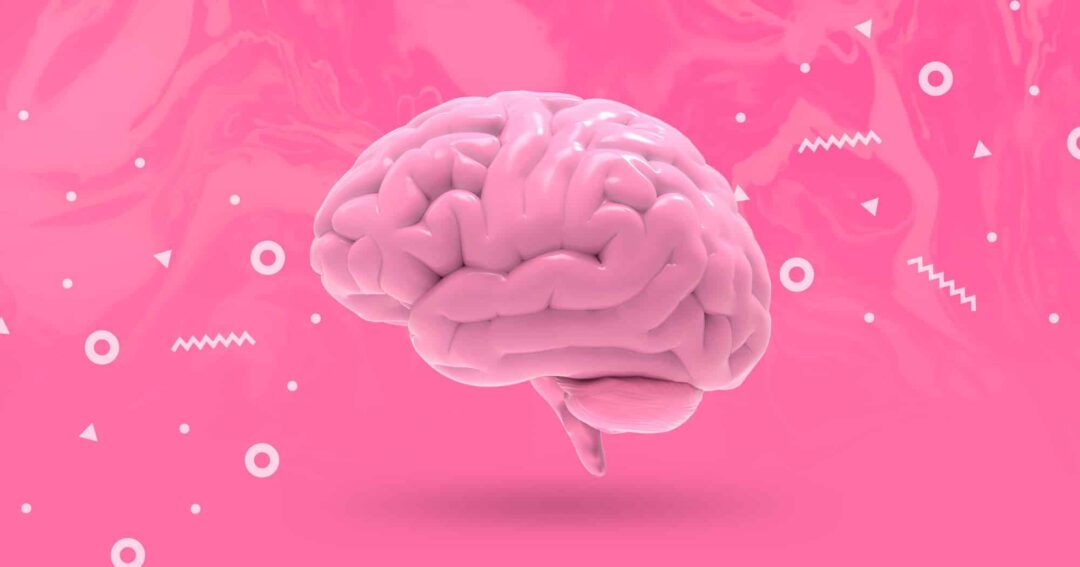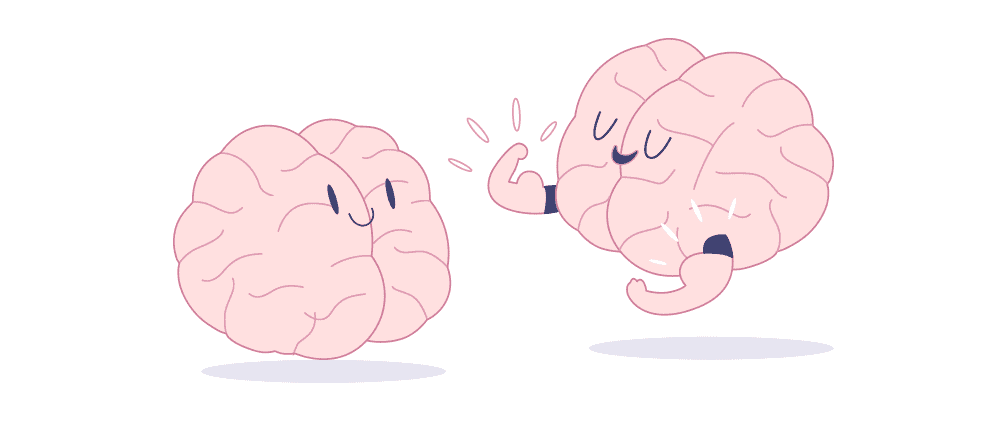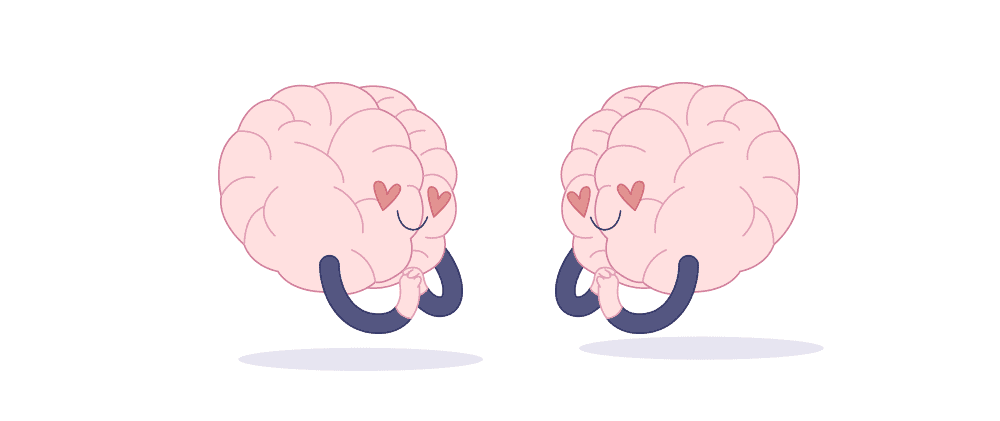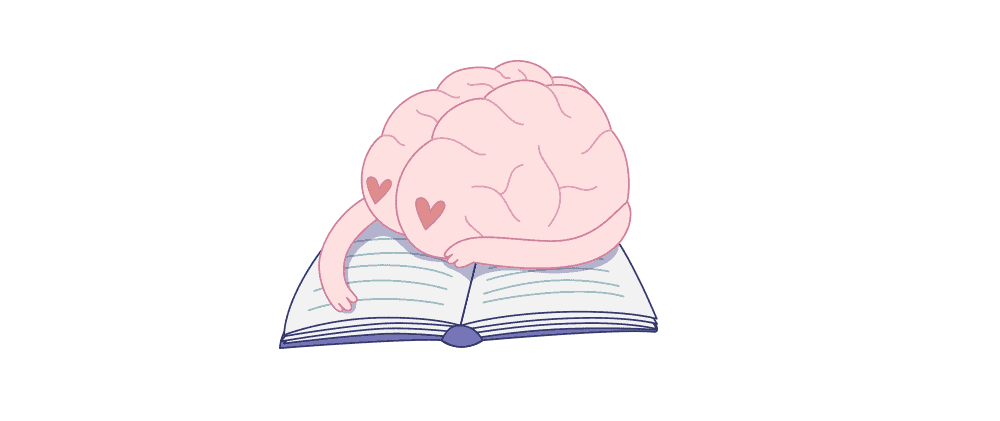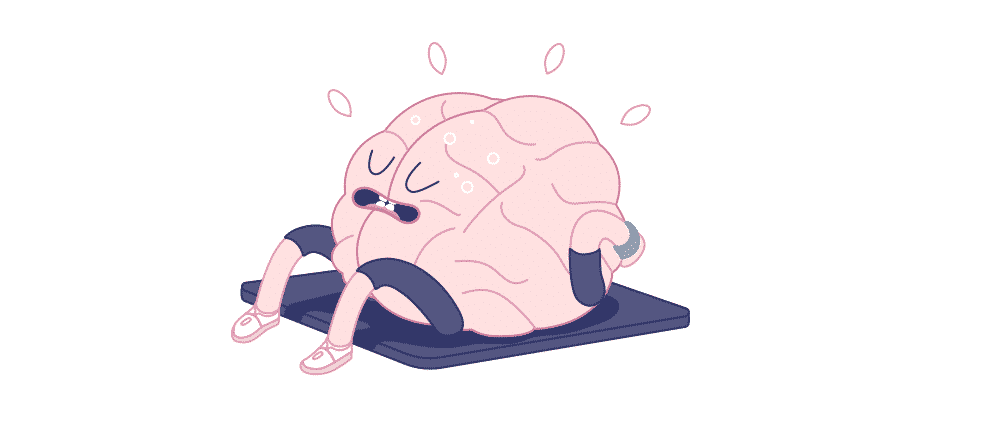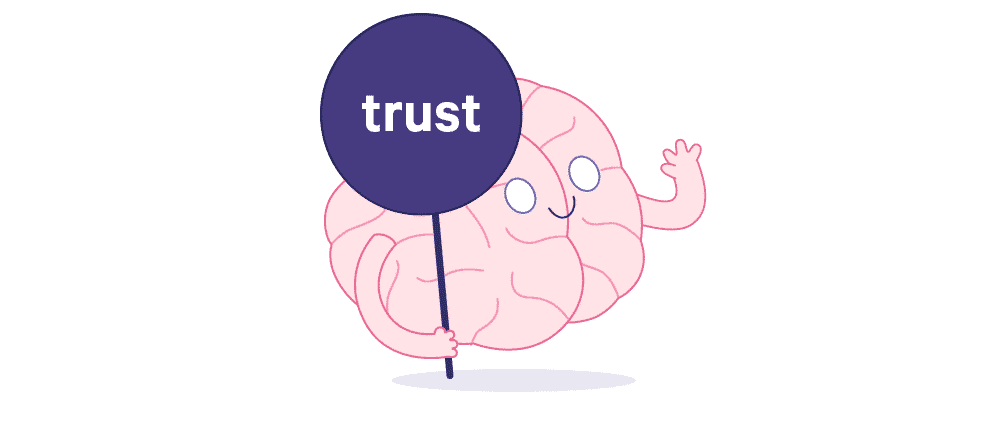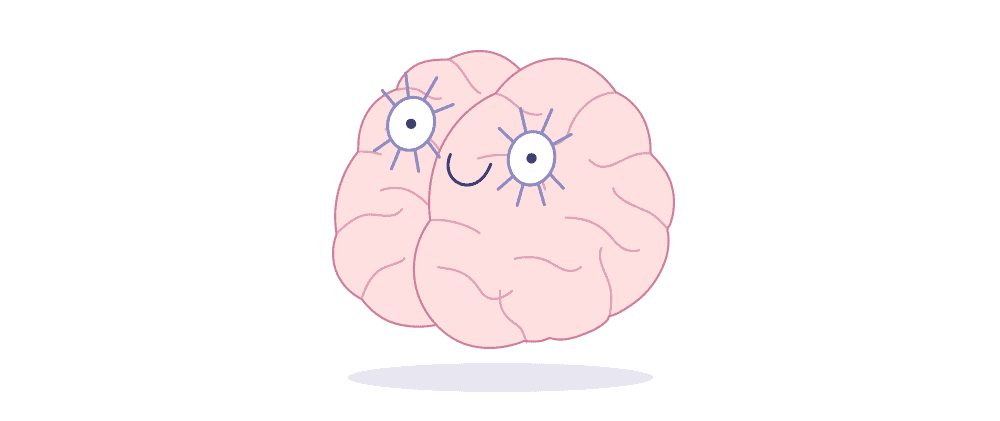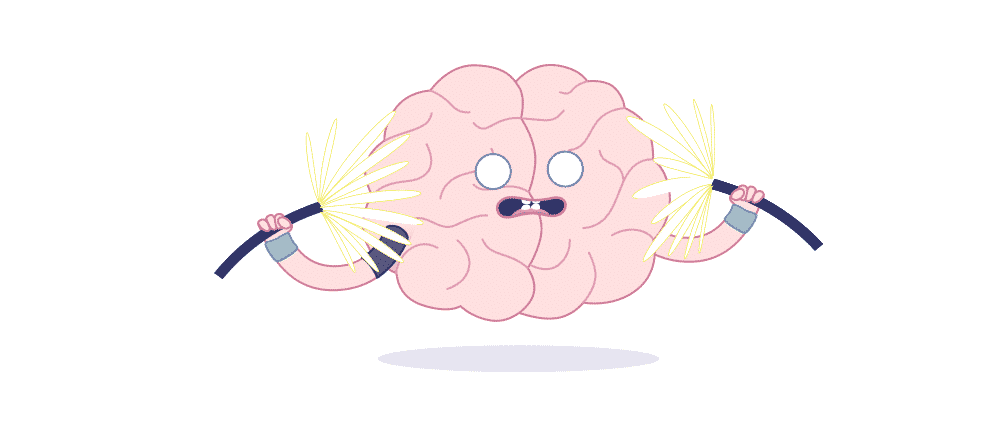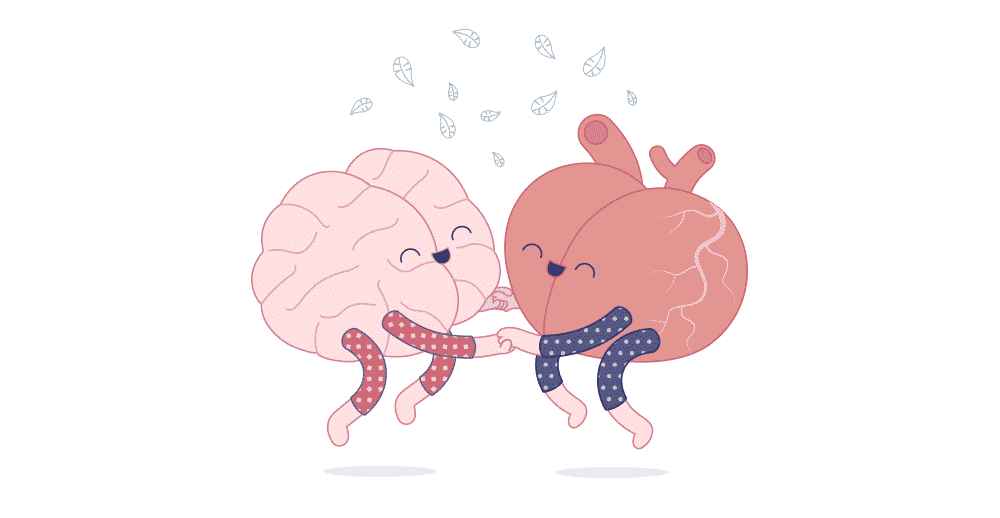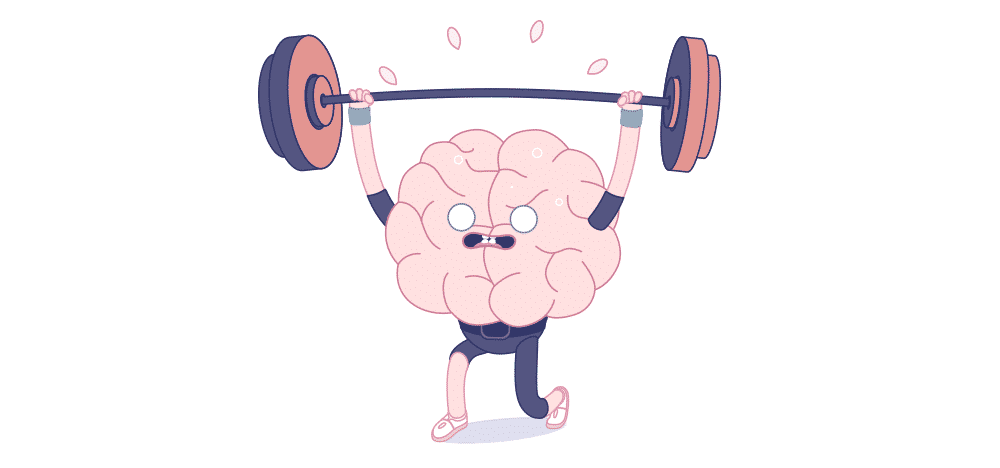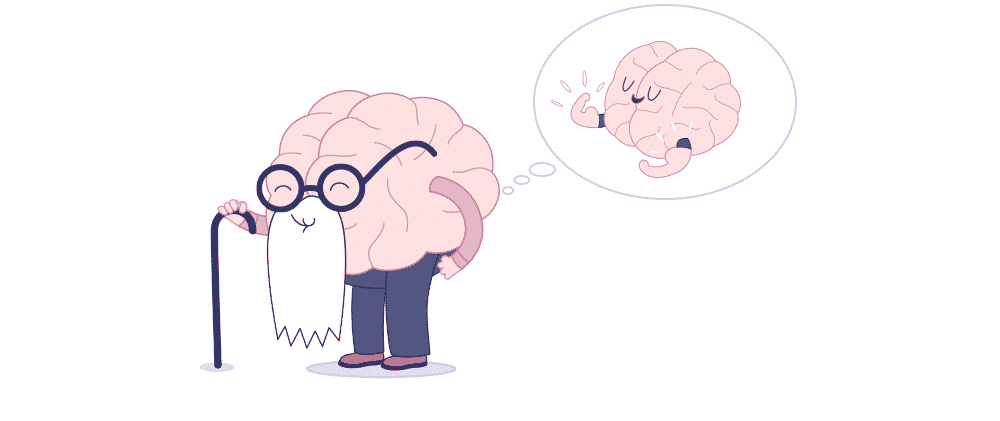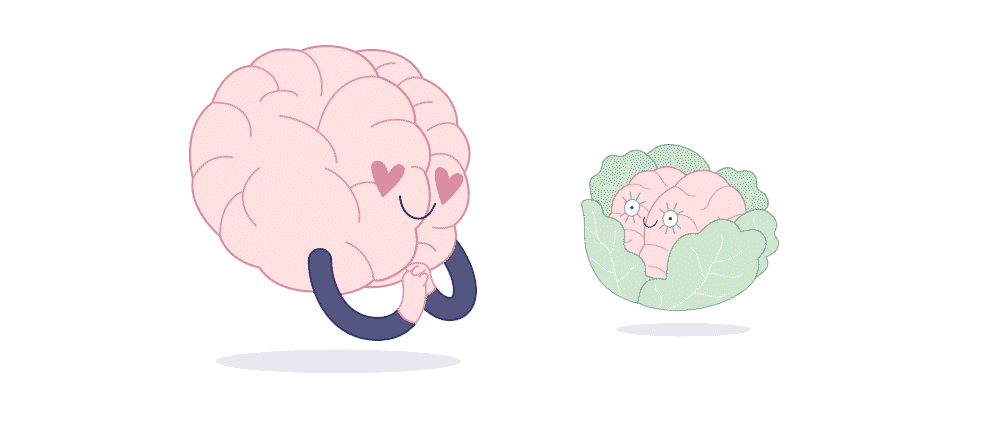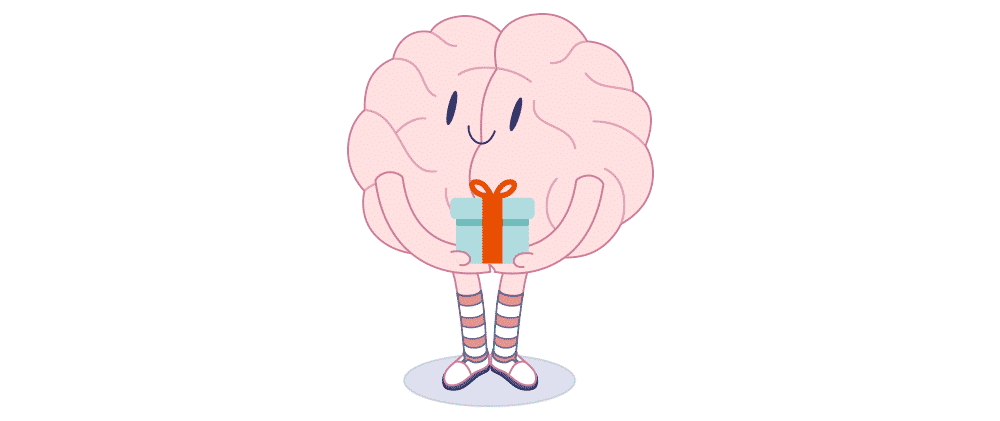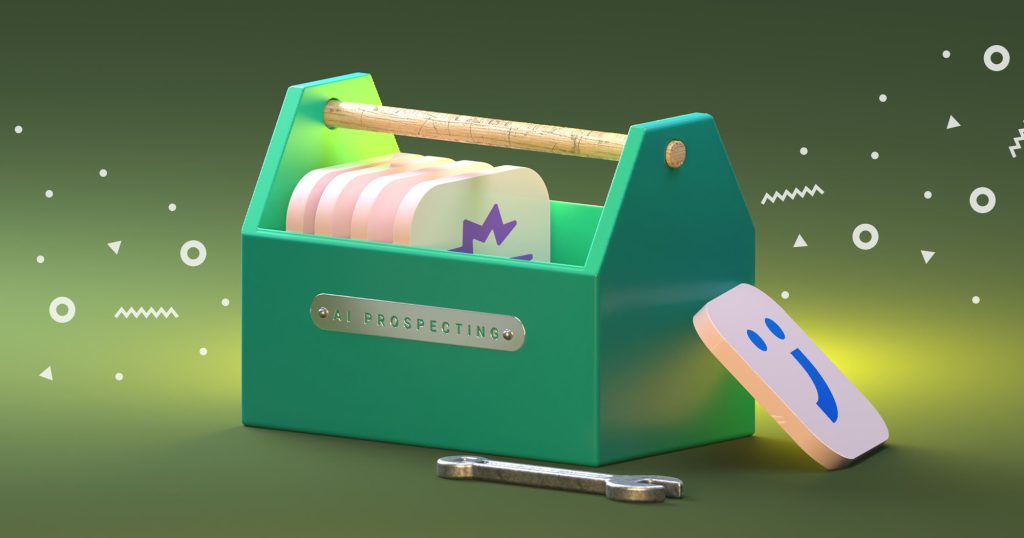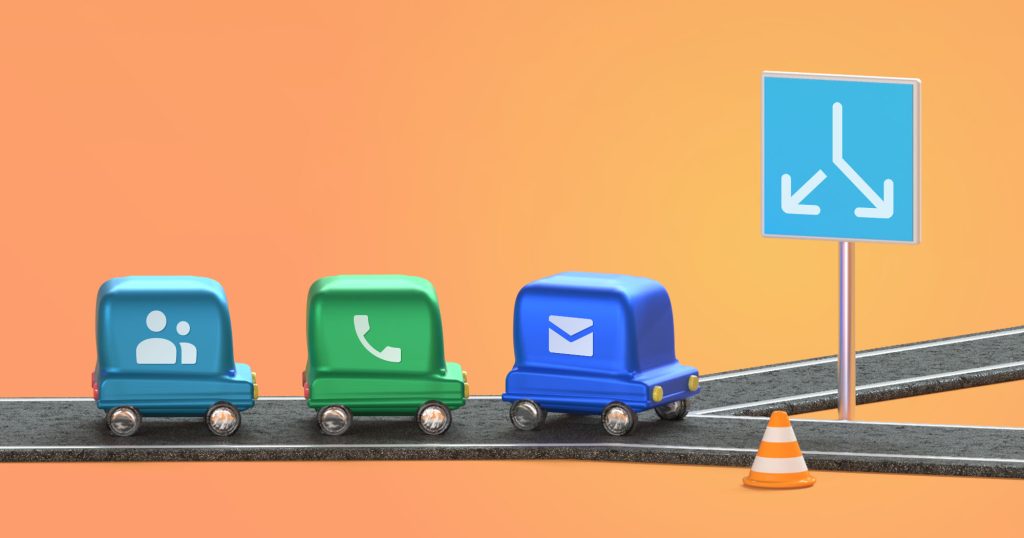Sales has changed a lot over the years. From a time when most sales were made face-to-face, we can now sell to millions of potential customers around the world. However, we’re still largely using the same techniques our great-grandparents used.
I’m a big believer that the principles stay the same, but when technology has changed the way we buy and sell so drastically, it’s time to bring selling into the information age.
To help, we’ve dusted off our lab coats and dug through the latest academic research on the science of buying and selling. Here are 16 research-based tips and tricks to help you sell more.
Trick 1 – Our brains love a deal
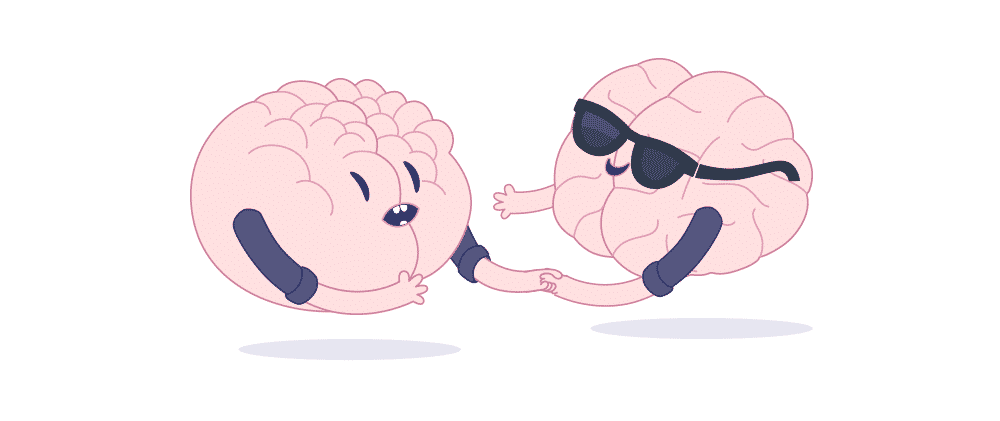
What would you prefer to pay? Low prices or high prices? Would you rather pay more or less?
Deal or no deal?
What if I chucked a couple of coupons in? Would that change your answer?
Any sane, sensible person would choose the low prices, right? It’s obvious. That’s what Ron Johnson thought anyway. When he was hired as CEO at JCPenney, he had a grand vision for the company which included getting rid of the inflated prices, along with the coupons and sales, and replaced them with ‘fair and square’ prices.
The result? A total disaster. Sales plummeted and Johnson was later fired.
What went wrong? Why was transparent pricing such a bad idea? Why do we have such an attachment to coupons?
The latest research shows there’s a very real reason we’re so keen on getting a deal (even when it isn’t really a deal).
Investigating the neurophysiologic effects of online coupons, researchers recorded what exactly happened when participants used a $10 coupon. They experienced, among other results:
- an 8% decrease in adrenocorticotropin (a stress hormone)
- a 14% increase in oxytocin (also known as the ‘love hormone’ and the ‘cuddle chemical.’)
- a 4% decrease in heart rate
The study noted the results indicated ‘coupons elicit physiological reactions similar to having a positive social interaction.’ In addition, the participants reported higher levels of happiness, correlating with the change in oxytocin levels.
Read through those results again, because they’re pretty incredible. People don’t just ‘like’ coupons; they have an actual physical reaction to them, like a drug.
Online coupons make people happier.
However…
Before you start going crazy with the promotions, there’s been another study you should be aware of. This time researchers were looking into the effect price promotions had on buyers and loyalty.
Promotions are a common method for attracting new customers and increasing sales. So if I want an influx of new customers for my product, I run a sale. New customers decide to try it as it’s on offer, then carry on buying when the product returns to its normal price. That’s the theory, and it makes sense. But is it what actually happens?
The study aimed to quantify exactly how much a temporary price promotion would attract new customers, and if it would have an effect on whether they bought the brand again in the future.
The results may surprise you.
The study found the majority of buyers during a promotion had already bought the brand at least once in their last five purchases of the same category (77% to be exact, compared to 81% of normal-price buyers).
In other words, most of the people taking advantage of the promotion were already existing customers. Furthermore, they weren’t any more likely to buy the product after the promotion ends.
Does this mean you should never run a promotion? No, they’re still a valid way of generating sales, one that we use at Reply. Just be aware of the limitations, particularly when it comes to generating new customers and ongoing loyalty. The study concluded there was ‘little recourse to the idea they can result in “try it, like it, buy it again later” effects.’
Trick 2 – Our brains care a lot about what others think
We all like to think we’re rational human beings, capable of assessing and making our own decisions.
However, we rely more on others than we often realize. Whether it’s deciding what movie to see, planning our vacations or buying a product, we’ll look to others to help us make a decision. We’ll check how many people have also bought a potential product, we’ll read product reviews, and we’ll sort results based on popularity.
To get a better idea of the effects others have on us, a study was carried out on ‘herding’ in relation to selling products online. The results confirmed consumers used the choices and evaluations of others as cues for making their own decisions.
Big companies know this and take full advantage of it. Amazon includes the 5-star review right next to the product name and shows you the number of reviews. On a product page, they include what other customers buy after looking at the product. Netflix includes what movies and series are currently trending in their recommendations, so we can see what other people are watching.
It’s not all good news though. This study also found herding effects were significantly offset by negative comments from others. In other words, while good reviews have a positive effect, bad reviews have a negative effect. This shouldn’t come as a surprise, but it’s a good reminder you better be confident in your product or service before adding the option to write reviews. If there are too many negative comments, it could hurt your sales.
Interestingly, the study concluded the recommendations of other consumers were more influential than recommendations from an expert; we want to know what people like us think. If you have the option, include fellow user reviews and testimonials, rather than from the experts.
Additional research was carried out into electronic word of mouth (otherwise known by the exceptionally catchy acronym eWOM). More specifically, researchers wanted to find out what made eWOM effective.
It turns out the actual content of the eWOM had no significant impact. Rather, the quality and quantity had positive results on consumer trust and whether they were likely to buy again in the future. They also concluded a participating factor, the intensity of the eWOM, had the greatest impact on repurchasing.
Sources: Huang, M. (2006). Herding in online product choice. Psychology & Marketing, 23(5), 413-428
Brain Trick 2 Bonus – Our brains love reviews, but the effect varies with our age.
Yes, our brains love reviews and they’re super-important, but how consumers react to reviews will vary depending on their age.
Researchers investigated how three factors influenced online purchases:
- Product attributes
- Average consumer ratings
- Single affect-rich consumer reviews (positive or negative).
They found younger adults used all three factors, as expected. Products with better attributes and higher average consumer ratings were preferred, with the average rating usually a deciding factor for similar products. For example, if they were looking to buy a new phone, they’d first consider the features, and if you couldn’t decide you’d go for the one with the highest average review.
The preference for the higher-rated product, however, could be overridden by a single affect-rich review, whether it was positive or negative. So if one of those reviews said how the phone transformed their lives for the better, or that it blew up in their hands, that would be enough to make you forget the average rating.
Interestingly, they found that while older adults considered product attributes and were strongly influenced by a single affect-rich negative review, they did not take into account the average consumer ratings or single affect-rich positive reviews. So if they were looking for a phone, that average review score doesn’t mean a thing, nor does it matter if it had an amazingly positive review. They’d look for phones with the features they wanted and avoid any with strong negative reviews.
This means, if your target market is made up of older adults, one review with a strongly negative experience could be disastrous, and you can’t rely on average ratings to counter this effect.
Trick 3 – Our brains care a lot about our identity
Who are you?
Are you your job? Your social status or class? Your political or religious beliefs?
We’re particularly attached to how we identify ourselves; after all, it’s what we base most of our decisions on (at least when we’re not following the crowd, as in the last point).
It also can have an effect on our purchasing decisions.
Copywriters are well aware of the importance of focusing on benefits, rather than features. We’re not interested in what a product does; we’re interested in how it helps us do what we need to do. How does the product help us reach our goals? Now there’s evidence that products that help us reach goals related to our identity jump to the top of the queue.
The study found that when goals related to our identity are activated by a sales message, these take precedence over lower level goals. So, for example, if the message highlights the support of the fair-trade movement, activating that potential identity in customers, then that’ll become more important to them than lower level goals (such as whether the coffee tastes any good or not).
That means, if we can appeal to the right identity trait, it can become more important to the customer than even the product quality. By finding potential identities and activating them with the right messages, you can greatly increase the desire for your product.
Trick 4 – Our brain love stories
Imagine the scenario: You have a great product to sell, but no matter what you say, people aren’t buying. You’ve listed all the features, all the benefits, yet no-one seems to care. Over the next few months, you try every technique you can, but you fail to make a single sale. Time’s running out, and you’re about to give up when you suddenly find the solution: story-telling.
Of course, I could’ve just said storytelling is an effective way of getting the brain to pay attention. But what did you find more engaging? The fact, or the story?
We’ve been telling stories for thousands of years, and companies have recently begun to realize they’re a powerful method of selling. We pay more attention, engage more, and remember more with stories than we do with cold hard facts.
However, recent studies have looked into what type of stories are more effective. Traditionally, companies have chosen to use happy stories: Person faces challenge > person buys product > person solves challenge > person is happy.
Everyone lives happily ever after. It’s usually a safe bet, but it’s not always the most effective.
The research reveals that certain consumers had a more positive attitude toward the brand when the stories shared by the brand are ‘meaningful, rather than happy.’
For these people, stories with a sense of purpose matter more than a happy ending with butterflies and unicorns. What kind of people? The study concluded consumers with a ‘growth mindset’ were more likely to find meaningful stories effective, being able to accept stories that contained ‘negative emotions in positive pursuits entailed in meaningful, but not happy, stories.’
If your customers are particularly invested in growth (such as start-up founders and entrepreneurs) then look at what stories you tell. What’s the primary emotion?
Happiness is good, but meaning is better.
Trick 5 – Our brains care more about transformation than information
While we’re on the topic of storytime, other studies have been done into effective message strategy, particularly when it comes to engagement on good old social media.
They looked into three particular types of message:
- Informational – Let’s stick to the facts, sir.
- Transformational – You might be this, but you could be that.
- Interactional – What did you think about this?
The results found the transformational message strategy was the most powerful driver of consumer engagement. Informational and the interactional message strategies came in joint second.
In your social selling, focus on stories and messages that showcase your customer’s transformations. Before your product, they were just Bruce Wayne. Afterward, they were Batman. They were Bruce Banner, now they’re the Hulk.
Tying into the last point, customers aren’t buying a product or a service. They’re buying a better version of themselves. If your messaging supports that, if it demonstrates that transformation is possible, you’ll enjoy far higher engagement.
Even if you’re currently using informational and interactional messages, the study found that when you compliment these kinds of messages with a transformational message strategy, there was a significant increase in their effectiveness.
Trick 6 – Our brains buy when we trust
When you’re buying in person, trust is a huge factor. We consider the location, the person, their behavior, the goods, their condition, and so on.
If you’re buying an iPhone from the Apple store on the high street, you feel confident.
If you’re buying an iPhone from some guy in a hoodie in a back street, you probably don’t feel quite so confident.
While this is obvious in face-to-face exchanges, the same is true when we buy online. Whether it’s conscious or not, we’re looking for clues. Can we trust this site, or are they going to steal our credit card details?
If you’re reading this, I’m going to assume you’re a decent person with the best of intentions. You have a good product/service, and you’re not looking to rip anyone off. However, you may unintentionally be giving off the wrong signals, and those signals will cost you.
Investigating consumer trust online, researchers found that consumers considered lots of different factors, including:
- Security
- Privacy assurance
- Website usability
- Product information quality
Security and privacy are unlikely to be a big surprise as factors affecting trust; if Google is flagging your site as insecure, or if you’re asking for personal details without any mention of how you’ll protect their privacy, these are going to be red flags. However, the other two can easily be overlooked as trust factors. But if your UX and product descriptions aren’t up to scratch, it turns out that’ll affect trust.
In turn, trust affects whether people are likely to buy from you or not. The study found a clear link between trust and ‘the formation of positive attitudes and behavioural intentions’ toward the website.
Along with your product/service, make sure your site is giving off the right signals to inspire trust, and people will be more likely to buy.
Trick 7 – Our brains think with our eyes
When we want to make a decision, such as what product we should buy, we literally look for clues. Even when appearance clearly has nothing to do with product quality, we give significant weight to what our eyes tell us.
Imagine you’ve just walked into a supermarket, or you’ve opened a shopping site. You see a display with three items stacked side by side. Which product are you more likely to buy?
While we’d like to think we’d make our decisions based on an independent assessment of each product’s features, we’ll look for visual clues or shortcuts. One study found these ‘clues’ include:
- Size (apparently bigger does mean better)
- Salience (or how noticeable something is)
- Position (where the product is in relation to others)
- Emotional Valence (or attractiveness)
- Predictability (If the product follows the expected status quo or not)
- The number of information elements (quantity, rather than the quality of information)
I found the studies regarding product positioning particularly interesting. Findings from two eye-tracking studies suggest products in the horizontal center received more visual attention and were more likely to be chosen.
How crazy is that? All things being equal, we’ll pick the item in the middle. The studies found we tend to look first at the central option, and as a result, subconsciously assign it a higher value. They also found what they called a ‘central gaze cascade effect.’ In other words, we’ll progressively increase the amount of attention given to the central option immediately prior to making a decision.
Together with the other visual elements, the studies found these biases lead customers to ‘allocate their attention in ways that are arbitrary to their goals and sometimes bias their choices.’
While careful planning can minimize some of these visual biases, others can’t be avoided. The research concluded that as a result, it’s ‘impossible to present information in a completely neutral way.’
That means, whether you intend it or not, the way you display your products is having an effect. Take this into account to promote the product you most want to sell.
Trick 8 – Our brains are fussy when it comes to the amount of information
You may be familiar with the famous jam experiment made regarding choice. When psychologists experimented with small and large assortments of jam, they found that although the large displays attracted more attention, the smaller display led to more purchases.
What you might not know is the same applies to information.
We like to know the facts when we make a purchase. When you bought your last phone, you probably wanted to know the specifications; what was the screen size, how much memory did it have, how big is the storage, what quality was the camera, how long did the battery last, etc.
However, did you look at all the facts? Did you consider the number of capacitors? The individual weights of all the components? The baseband version of the OS?
When we’re selling something, our gut reaction is to provide customers with as much information and as many choices as possible. However, we now understand that people have a limited amount of attention to give. Our brain power is finite, and in an effort to preserve energy, it filters out information.
This is great for giving our brains a rest but has the downside that we’re not great at accurately assessing large amounts of information. When our cognitive resources are low and our attention is depleted, we discard what we perceive as excess information.
We’ll base our decisions on the obvious details and go with our intuition, potentially ignoring important information which is readily available.
Sometimes, we’ll make bad decisions.
The latest research shows we’ll overestimate the importance of the most obvious clues and disregard the less obvious, less immediate consequences.
As a result, we’ll focus on what affects us today and ignore future results. We might buy a cheap printer but disregard the expensive ink costs.
However, not all consumers are equal in this regard. The results of one study found that experts made better decisions in high-information situations.
As a result, salespeople should carefully consider the level of information needed for their customers to make the best decision, taking into account their relative expertise.
Trick 9 – Our brains are connected to our heart
We’ve already considered storytelling, and how meaningful stories can be more effective than happy ones (for particular customers). However, this shouldn’t be taken to mean emotions aren’t important in sales.
When we buy something, we’ll imagine what our future looks like as a result. We buy a holiday and imagine how happy we’ll be on that golden beach. We buy accounting software and imagine how relaxed we’ll be not having to worry about our tax returns. We buy a meal and imagine how satisfied we’ll be once we’ve eaten it.
When we’re projecting into the future like that, we get a hint of those emotions. We anticipate how a purchase will make us feel.
Results of research confirm those anticipated emotions have a huge influence on our decision whether or not to buy. To be exact, they affect our value perception of a product; if we think it’ll make us really happy/relaxed/excited, we’ll place a higher value on it.
What does this mean for sales? It’s important to identify what emotions your customers associate with your product. Focus your campaigns on building and emphasizing that emotional connection and you’ll never need to convince a prospect to buy.
Trick 10 – Our brain associates more effort with more value
We all want the easy life, right? We often focus on making the buying process as straightforward and frictionless as possible. The fewer steps, the better. It makes sense, and companies make a lot of effort to reduce the number of steps needed to complete a purchase.
For example, Amazon allows their customers to buy with 1-click purchasing.
However, researchers have found that sometimes, this is a mistake.
A recent study provided evidence that the more effort consumers make to buy a product, the more they’re willing to spend on it.
For example, if a club has a long line before you get in, we’ll assume the club must be worth the wait. If sign-up for an app is by invitation only, we assume the app must be worth using.
Part of this is down to the psychology of sunk costs. If we’ve already put in time, effort, or money into owning a product or service, we’ll look for evidence to confirm we made the right choice.
If we’ve waited for hours to get into a club, we’ll ignore the over-priced booze and focus on the great music. If we’ve pestered our friends for weeks to get an invitation for a new app, we’ll ignore the obvious bugs and marvel at the amazing features.
We’ll do everything we can to justify the decisions we’ve already made.
There’s a lot to be said for making the buying process simple, particularly for commodity products with little variation.
However, the research shows it’s worth seeing what effect increasing the effort needed has on your sales.
While the foundational principles of selling will never go away, changes in technology and the buying process mean we need to keep our strategies and techniques up-to-date. By using the latest research, you can stay ahead of the curve and outsell your competition.
Trick 11 – Our brains can use past feelings to make future decisions
How can you encourage people to make more sustainable purchasing decisions? If they’ve made similar decisions in the past, it’s simple.
Researchers found that by encouraging consumers to recall the pride they felt when they engaged in other sustainable-related behaviors, they were more likely to purchase sustainable products. Remembering how good it felt to be environmentally aware in the past was enough to change their purchasing behavior in the future.
To be more specific, this effect was a combination of both anticipated pride at the prospect of making a sustainable choice, and the anticipated guilt if they didn’t. Either way, the consumers used their past feelings as a basis for anticipating how they’d feel after making a purchase.
While the study focused on sustainable purchases, the results suggest a connection between recalling how past behaviors made us feel and our future purchasing decisions.
By encouraging your prospects to remember the emotions they felt making previous decisions, you can improve the chances they’ll make similar purchases in the future.
Trick 12 – Our brains love an underdog…
Thanks to the underdog effect, we’re more likely to root for brands and companies who we view as disadvantaged. Perhaps most famously of all, Avis embraced their status as number two to their rivals Hertz with the tagline “We Try Harder,”
By highlighting the challenges you’ve had to overcome, along with your passion and determination, you can strike a chord with consumers and make more sales.
However, it’s not all good news for small companies, whether they portray themselves as underdogs or not. For example, customers expect small companies to be warm and friendly, much more so than larger businesses. As a result, if they find a small company to be cold and unfriendly, they experience a strong negative reaction. As large companies aren’t traditionally viewed as friendly, consumers won’t react as strongly to a similarly cold interaction.
If you’re a small company, it’s essential that all your interactions with customers are warm and personal (which is when a service like Reply comes in handy, helping you scale up your outreach while still keeping it personal. Just saying ;) ).
Trick 13 – But our brains also love it when big companies take responsibility for mistakes
If you’re a large company, what’s the best way to handle bad press?
Many try to ignore any negativity. Others complain and try to portray themselves as victims, unjustly persecuted by the media. When the Mercedes A-class flipped during safety tests, Mercedes initially tried to question the legitimacy of the test. However, this approach didn’t work out so well for them. After all, it’s tough to play the victim when you’re an internationally recognized company.
Researchers have confirmed large companies are far less likely to elicit sympathy when it all hits the fan.
So what’s the solution? Well, it turns out large companies are also far more likely to elicit admiration. The study found for-profit companies experienced greater benefits by proactively holding their hands up and taking responsibility, rather than trying to deflect responsibility and playing the victim. Sure enough, after Mercedes admitted the issue and set out to fix it, the A-class went on to become one of the best-selling cars of all time.
Next time you find your brand in the middle of a crisis, avoid the temptation to bury your head in the sand or, even worse, try and get sympathy by playing the victim. Even if you’re in the right, no-one will care. Instead, admit your responsibility and show how you’re going to set things right.
Trick 14 – Our brains love a free gift
Thanks to Cialdini, reciprocity is well-established as one of the pillars of influence; if you do something nice for someone, they’re more likely to do something nice for you in return, such as leaving you a tip or buying your product.
However, the benefits go further. For example, one study found that when a promotion was framed as a free gift (“Buy this computer for $999 and get a free printer”) as opposed to a bundle (“Buy this computer and printer together for $999”), this increased the sense of loss the customer felt in the event of returning the purchase. As a result, there were fewer product returns. Note that the more familiar a brand is, the more powerful the effect.
Another study found that framing an offer as a free gift could reduce inaction inertia (where people who’ve missed out on an offer are less likely to later buy at the regular price). When consumers encountered an offer that included a free gift, they’d assign a higher value to the main product (“that computer must be worth a lot”) and a lower value to the free gift (“that printer must be cheap”). As a result, people who’d missed out on the free gift offer had lower inaction inertia (i.e., they were more likely to go ahead and still buy the main product, even without the offer).
Given the option, frame your promotion as a free gift (rather than a discounted bundle) to encourage reciprocity, reduce product returns, and reduce inaction inertia.
Trick 15 – Our brains love the authentic and unique
Given the wide range of choice available to consumers today, authenticity is becoming an increasingly important differentiating factor. According to a 2017 report from communications agency Cohn & Wolfe, a massive 91 percent of consumers said they were willing to reward authentic brands with ‘a purchase, investment, endorsement, or something similar.’ 62 percent said they would specifically purchase from a brand they viewed as authentic.
Enso’s 2018 World Value Index> revealed more about current attitudes to authenticity, reporting that 91 percent say living life with a sense of purpose is important to them, and 81 percent believe that business can be a force for positive social and environmental change. However, this seems to be largely a missed opportunity for businesses, as only 36 percent say they trust business leaders to do the right thing. In fact, only one for-profit company made it into the top ten list of inspiring brands: Amazon.
Bonus brain trick. Our brains value unique products so much we actually prefer products made by mistake to otherwise identical, mistake-free, products. Amazingly, this preference holds regardless of whether the mistake enhances or detracts from the product. So if you’re selling t-shirts and the latest batch have a spelling mistake, don’t throw them out just yet! Unfortunately, this doesn’t apply where uniqueness isn’t a factor in the product, so that ‘unique’ buggy software isn’t going to be a selling point.
Sorry!
Trick 16 – Our brains love new features
How do you follow up a successful, popular product? What’s the best way to encourage current users/subscribers to upgrade to version 2.0?
Many would work on developing overall improvements across the existing features. While that may sound sensible, research shows it’s actually better to focus your efforts on developing a few key features, rather than generally improving all features.
The study looked at the best ways to position an improved product, relative to an existing version, to encourage existing customers to stop hesitating and upgrade to the next version.
They found that existing customers were more likely to upgrade when the improved version was perceived as significantly different from the existing product. They also had stronger preferences (compared to first-time buyers) for products with new features, rather than improved existing features.
If you want to impress your existing customers, focus on developing completely new features, rather than small incremental improvements to the existing product.
Source: Okada, E. (2006). Upgrades and New Purchases. Journal of Marketing, 70(4), 92-102.
Feeling inspired for your next sales campaign? We are constantly working on making Reply the best choice for salespeople, with advanced AI features and great customer support.
Sign up today for a 14-day free trial and see for yourself.
